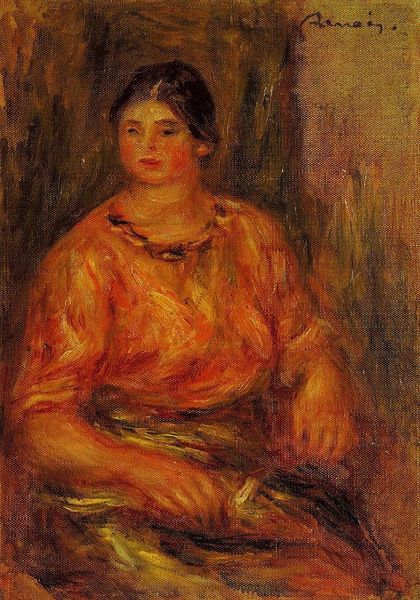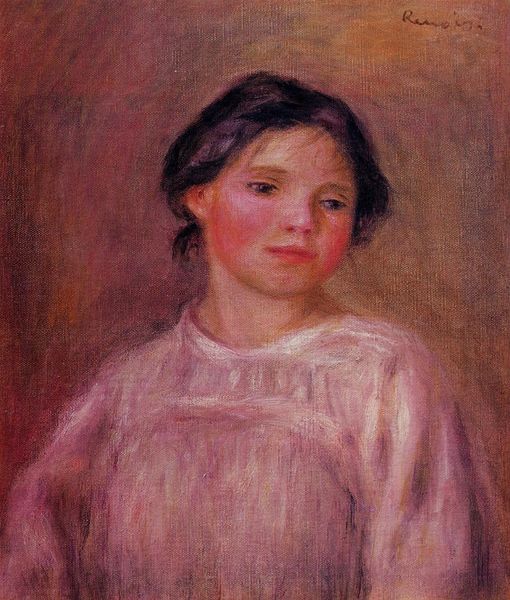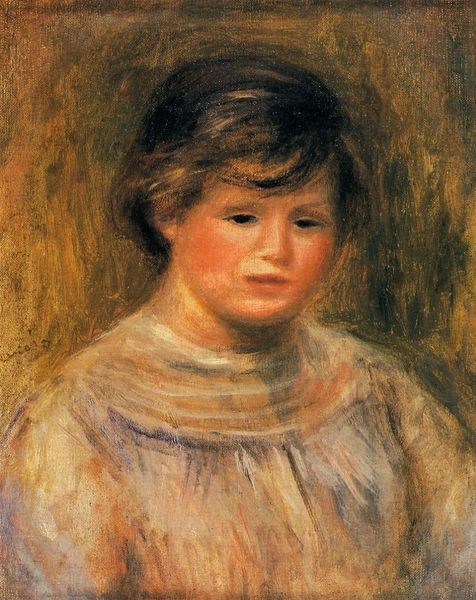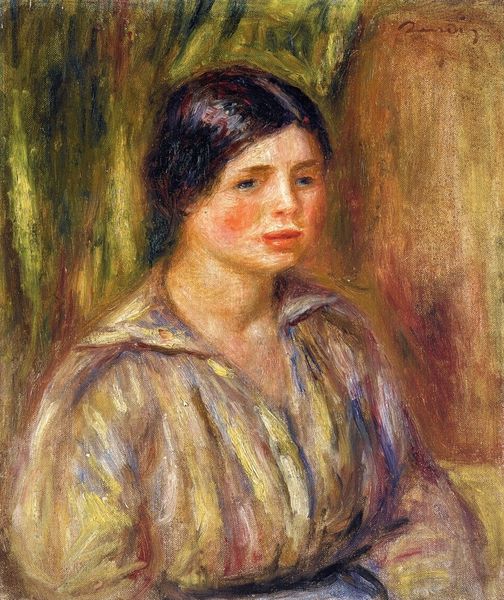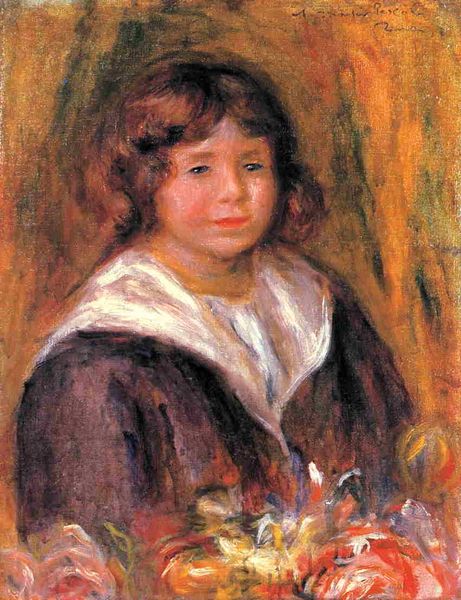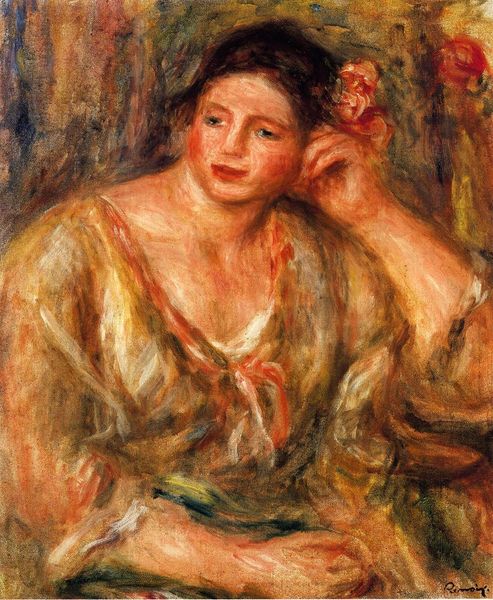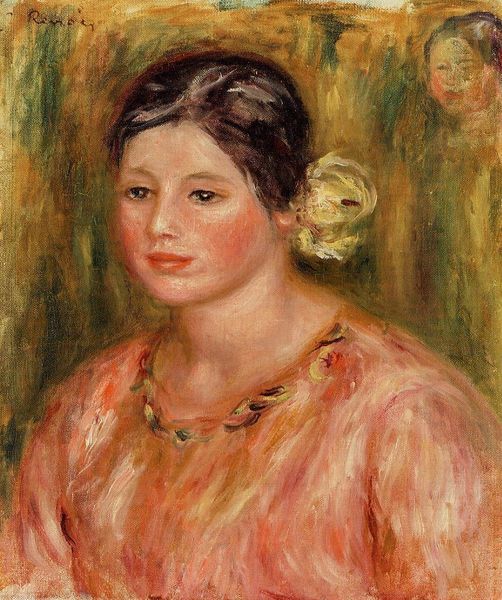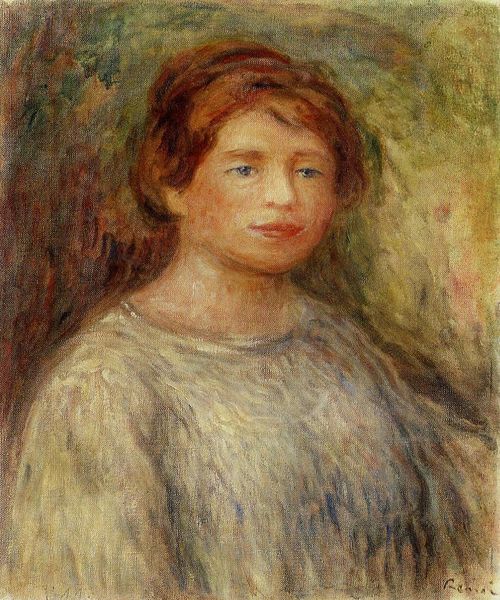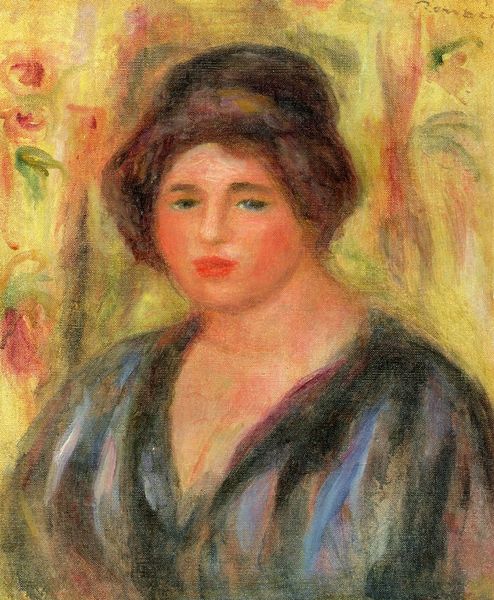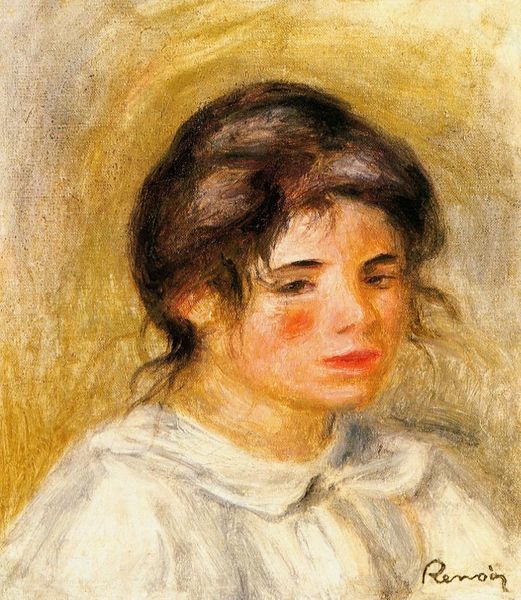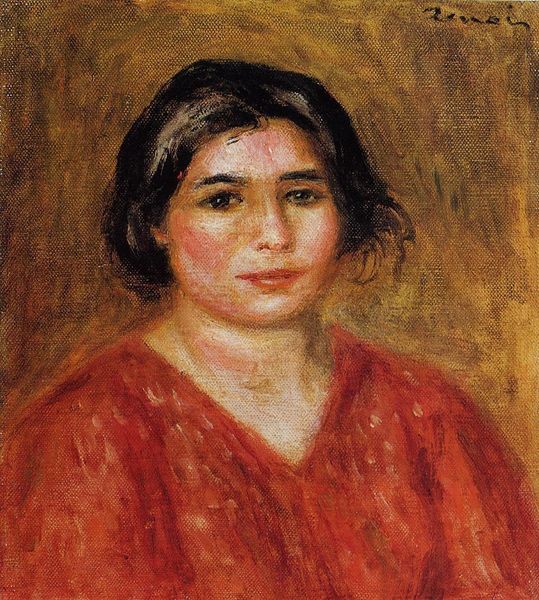
Copyright: Public domain
Editor: This is Renoir's "Seated Woman in a Blue Dress," painted in 1915. It's an oil painting, a portrait that feels quite intimate to me. I'm struck by how grounded and present the woman seems. How do you interpret this work? Curator: Considering its creation in 1915, it's impossible to ignore the backdrop of World War I. While Renoir continued to paint his intimate scenes, Europe was being reshaped by conflict. Look at the woman's gaze; there is something strong and resolved in her expression. What do you think her blue dress signifies? Editor: Perhaps it's meant to be calming or representative of the domestic sphere? Blue often represents peace and stability. Curator: Exactly. Think of the Impressionists and their relation to the salon. Here, the sitter's solidity offers a quiet challenge to traditional femininity through realism, even if subtle. How does this portrait disrupt those conventional representations, do you think? Editor: The woman seems more present, less idealized than what I've seen in academic art; her imperfections feel very human. And that blue dress isn’t glamorous or ostentatious. Curator: Precisely! It emphasizes comfort over display. The painting acts as a study of an individual removed from typical high society. The subject matter and rendering point to Renoir's democratizing artistic practices. This makes it revolutionary for its time, don't you agree? Editor: Yes, I hadn't thought of it that way before, but you’re right; it quietly resists traditional ideals. Thanks for this eye-opening perspective. Curator: It’s important to remember art is never created in a vacuum; even scenes like these reflect complex social dynamics. I leave feeling reflective.
Comments
No comments
Be the first to comment and join the conversation on the ultimate creative platform.
